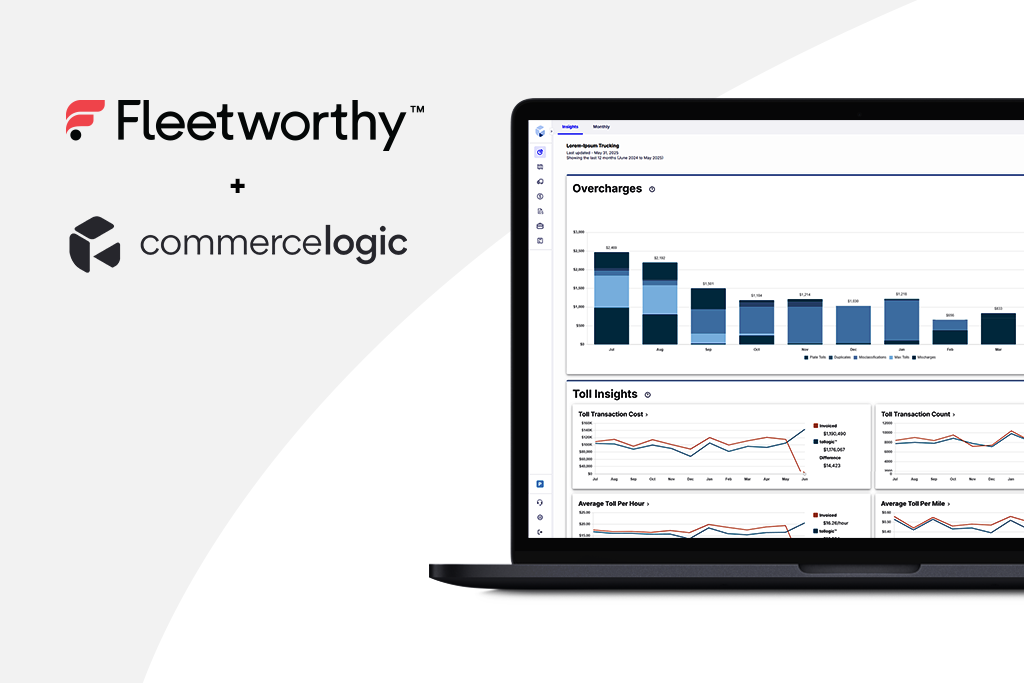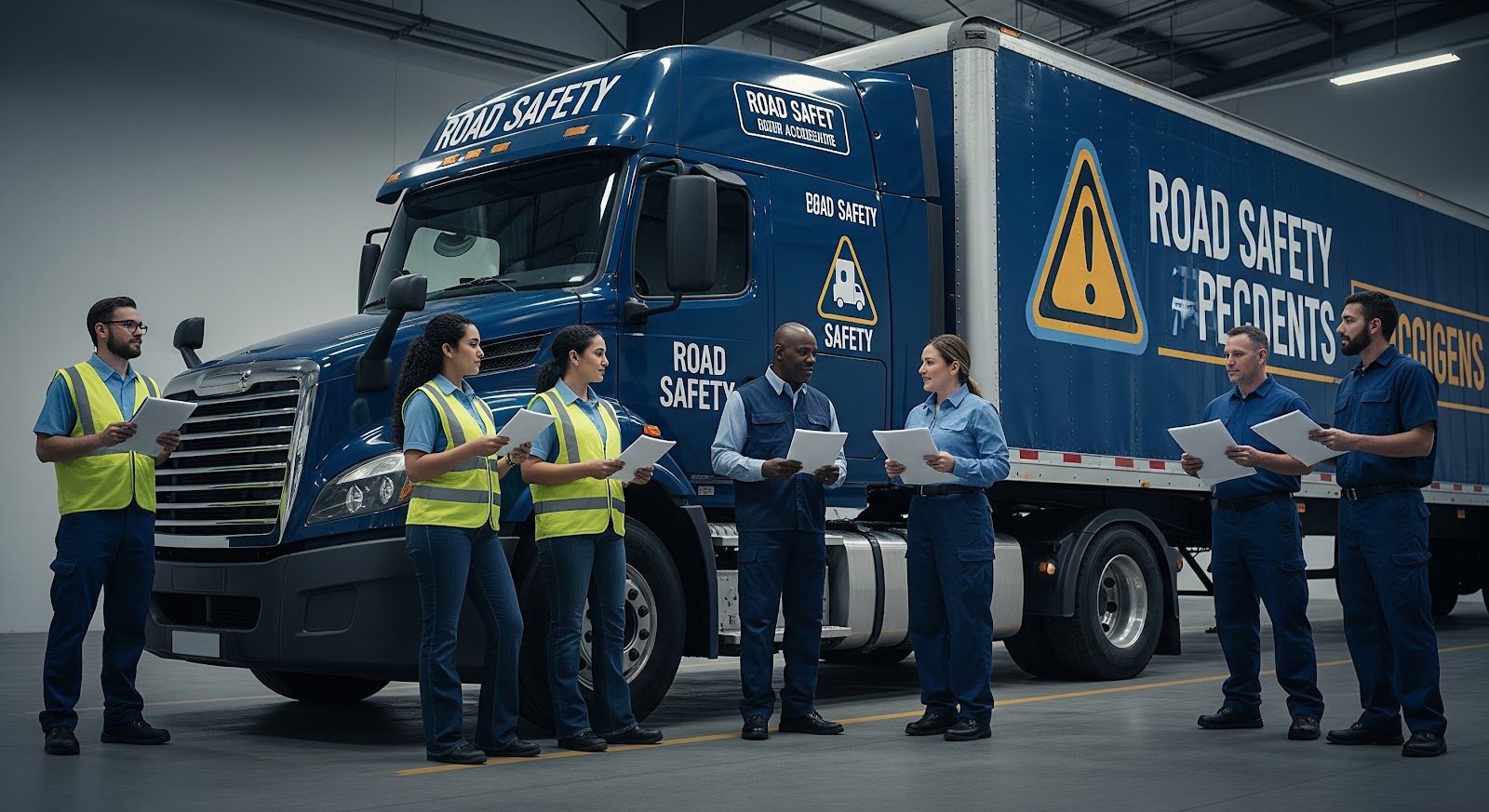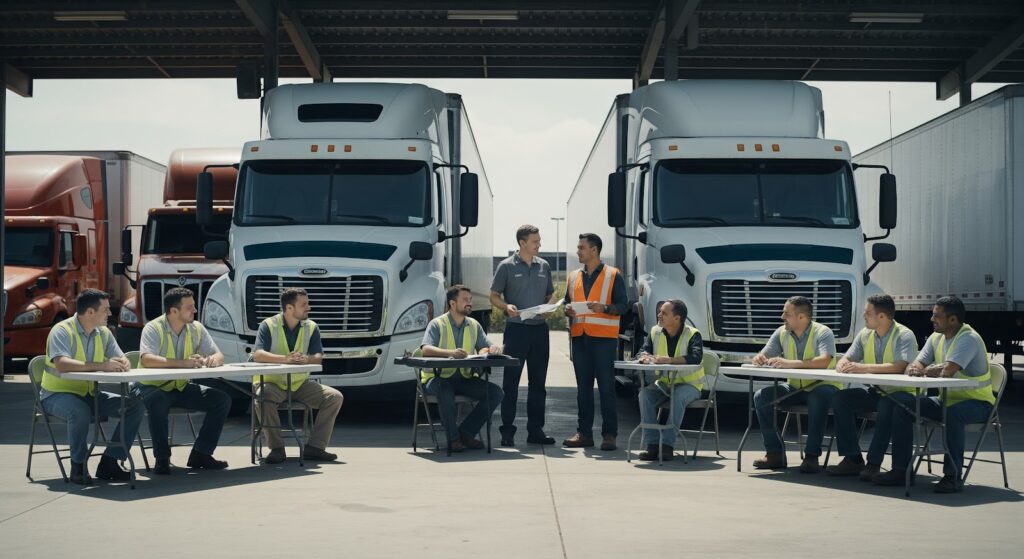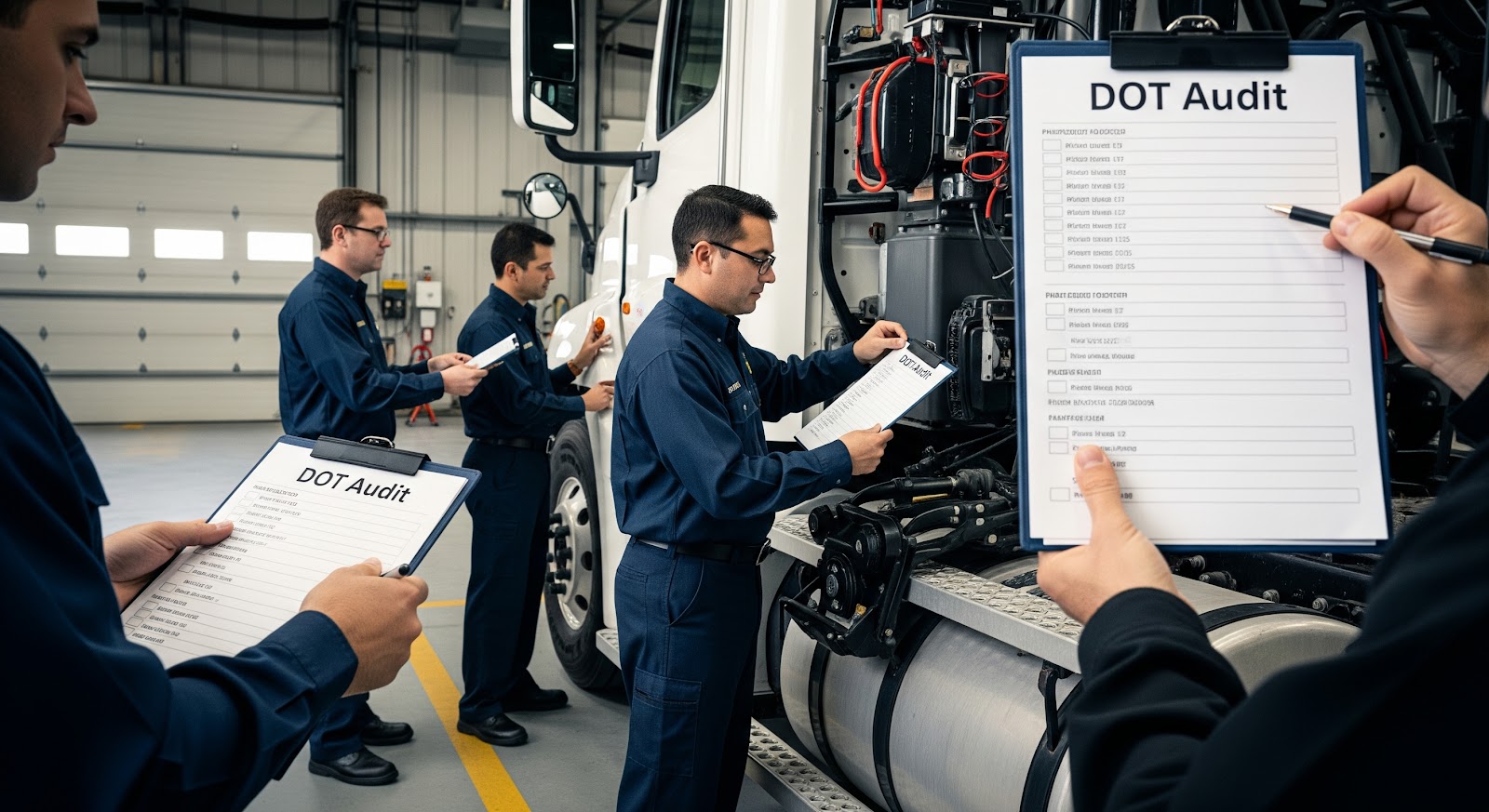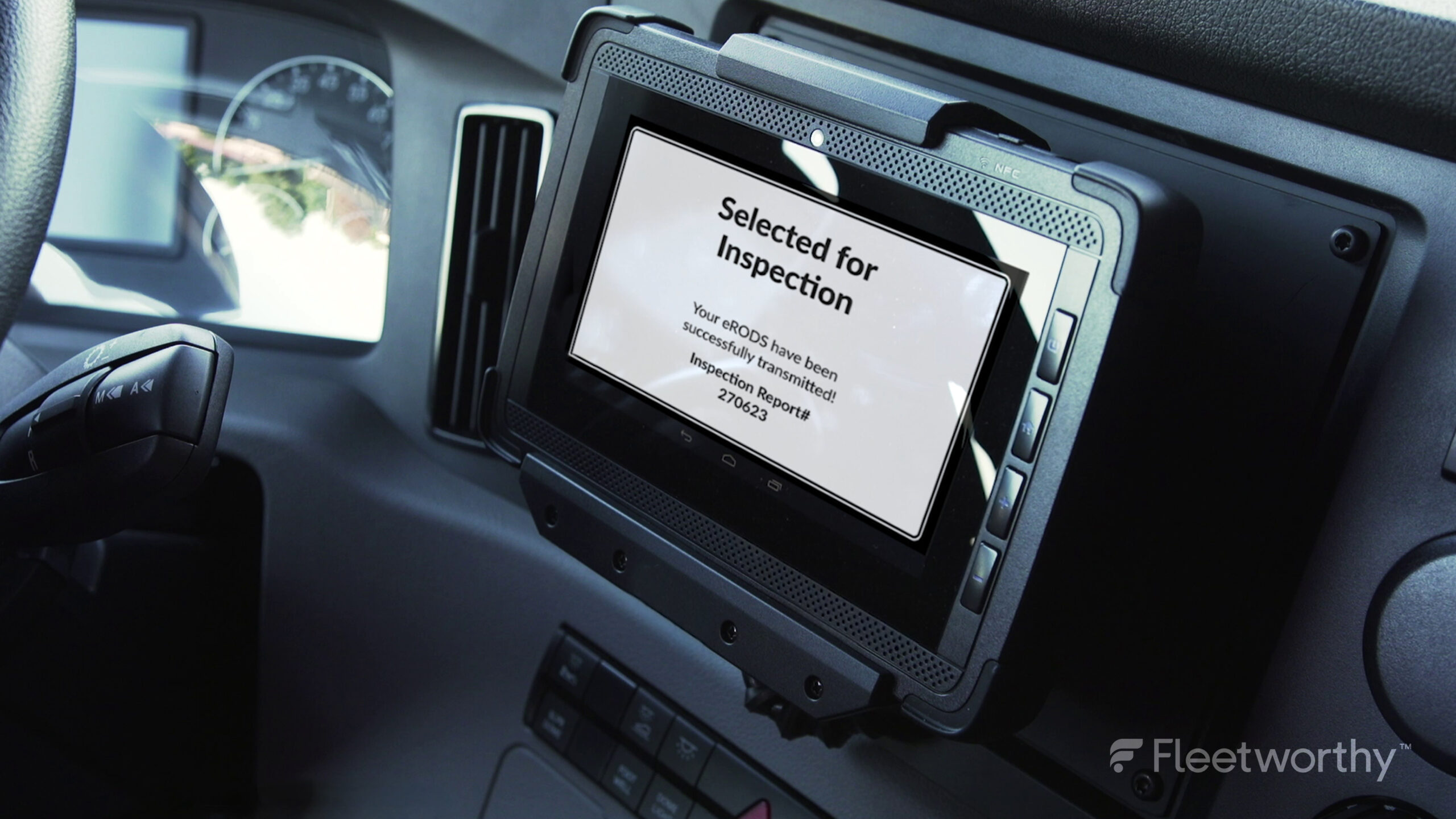
Businesses of all sizes rely on transportation to deliver products, provide services, and keep operations running smoothly. However, managing a fleet comes with complexities—from vehicle selection and safety compliance to cost control and leveraging technology. As fleet operations grow more sophisticated, understanding how to strategically manage commercial fleet vehicles is critical for reducing risk, maintaining compliance, and optimizing performance.
This guide provides a comprehensive overview of commercial fleet vehicles, helping fleet managers, safety officers, and business leaders make informed decisions to keep their fleets compliant, safe, and efficient.
Factors to Consider When Choosing Commercial Fleet Vehicles
Choosing the right commercial fleet vehicles is a strategic decision that directly affects your organization’s operational efficiency, safety performance, and long-term costs. The process involves more than simply purchasing vehicles; it requires aligning your fleet composition with the specific needs of your business while anticipating future demands, regulatory changes, and advancements in technology.
Operational Needs
The starting point in fleet selection is a clear understanding of your organization’s day-to-day operations. Vehicles should be chosen based on the tasks they will perform, the environments they will operate in, and the level of reliability required. For example, urban delivery fleets may prioritize compact, fuel-efficient vans that can navigate congested streets, while construction fleets may require durable trucks capable of handling rough terrain and transporting heavy equipment.
Failing to align vehicle capabilities with operational requirements can lead to inefficiencies, increased costs, and higher accident risks.
Payload & Capacity Requirements
Another critical factor is ensuring that vehicles can safely and legally carry the loads they’re intended for. Overloading a vehicle can result in safety hazards, increased wear and tear, regulatory violations, and fines. It’s important to assess the typical weight and volume of cargo, tools, or equipment your fleet will transport. For some operations, towing capacity may also be a key consideration.
Selecting vehicles with the correct payload capacity ensures both regulatory compliance and operational efficiency, preventing unnecessary strain on vehicles and extending their service life.
Fuel Type & Efficiency
Fuel selection plays a significant role in both operational costs and environmental impact. Businesses can choose from gasoline, diesel, alternative fuels, or electric power, depending on their fleet’s size, routes, and performance needs.
Gasoline is commonly used for light-duty vehicles due to its accessibility and lower upfront costs, while diesel offers better fuel efficiency and torque for heavy-duty trucks. Alternative fuels like compressed natural gas (CNG) or propane can reduce emissions and may be more cost-effective in certain regions. Electric vehicles (EVs) are rapidly gaining popularity for light and medium-duty applications, offering lower operating costs and a smaller environmental footprint.
When selecting vehicles, consider both short-term fuel economy and long-term energy costs, as well as the availability of fueling or charging infrastructure in your operating area.
Safety Features
Equipping your fleet with advanced safety features can significantly reduce accident risks, improve driver performance, and lower insurance costs. Basic safety equipment like anti-lock brakes, airbags, and electronic stability control is standard in most modern vehicles. However, many commercial fleet vehicles now come with advanced driver assistance systems (ADAS) that further enhance safety.
These systems may include features like lane departure warnings, blind spot monitoring, collision avoidance technology, adaptive cruise control, and automatic emergency braking. Investing in vehicles with these technologies not only protects your drivers but also reduces liability, minimizes downtime due to accidents, and contributes to better overall fleet safety performance.
Total Cost of Ownership (TCO)
Selecting commercial fleet vehicles requires looking beyond the initial purchase price. The Total Cost of Ownership (TCO) includes all expenses associated with operating a vehicle over its lifecycle. This encompasses fuel consumption, maintenance and repair costs, insurance premiums, depreciation, downtime, and eventual resale value.
Fleet managers should conduct a thorough TCO analysis to avoid hidden expenses that can erode profitability. Sometimes, a vehicle with a higher purchase price offers better long-term value due to lower maintenance needs, better fuel efficiency, or higher resale potential.
Leasing vs. Purchasing
Businesses must also decide whether to lease or purchase their fleet vehicles, based on financial considerations, operational needs, and flexibility requirements. Leasing can provide lower upfront costs and predictable monthly payments, making it easier to maintain a modern, reliable fleet. It also offers flexibility to upgrade vehicles regularly, which can be advantageous in industries with rapidly evolving technology or regulatory standards.
Purchasing, on the other hand, may be preferable for businesses seeking long-term ownership, avoiding mileage restrictions, or acquiring specialized vehicles with custom configurations. Ownership can also lead to lower long-term costs for vehicles kept in service beyond their financing period.
The choice between leasing and purchasing often depends on your organization’s cash flow, asset management strategy, and operational stability.
Electrification & Sustainability Considerations
As businesses face increasing pressure to reduce their environmental impact, many fleet operators are exploring electrification and sustainability options. Electric vehicles (EVs) are becoming more viable, particularly for urban deliveries, short-range service routes, and light to medium-duty applications.
EVs offer significant benefits, including lower fuel costs, reduced maintenance requirements, and decreased greenhouse gas emissions. However, businesses must also consider the availability of charging infrastructure, vehicle range limitations, and the higher initial investment.
Sustainability goes beyond electrification; implementing eco-driving programs, optimizing routes, and reducing idling time also contribute to lower emissions and fuel consumption.
By incorporating sustainability into your fleet composition strategy, your organization can meet regulatory requirements, enhance its public image, and reduce operational costs over the long term.
Careful consideration of operational demands, vehicle specifications, safety features, cost factors, and sustainability goals is essential when building a commercial fleet. A well-planned fleet composition enhances efficiency, reduces risk, and positions your business for future success.
Navigating State-by-State Regulations for Commercial Vehicle Fleets
While federal agencies like the FMCSA and DOT establish baseline safety and operational standards for commercial fleets, state-specific regulations often introduce additional complexities. Fleet operators engaged in interstate commerce must not only comply with federal laws but also account for varying state requirements that can impact everything from vehicle registration to weight limits and safety inspections.
Understanding and managing these differences is crucial to maintaining compliance, avoiding costly penalties, and ensuring uninterrupted operations.
Key Areas Where State Regulations Vary
1. Vehicle Registration and Permitting: States may impose unique requirements for vehicle registration, International Registration Plan (IRP) participation, and special permits for oversized or overweight vehicles. Fleets operating across state lines must ensure proper registration in each jurisdiction to prevent fines or out-of-service orders.
2. Size and Weight Restrictions: While federal regulations set maximum vehicle size and weight limits for the Interstate Highway System, states often enforce additional or more restrictive limits on other roadways. Bridge weight restrictions, axle load limits, and designated truck routes can vary significantly by state and even by municipality.
3. Safety Inspection Programs: Several states mandate periodic vehicle safety inspections beyond federal requirements. These programs may include emissions testing, annual safety checks, or specialized inspections for certain vehicle types like passenger carriers or hazardous materials transporters.
4. Driver Licensing and Endorsements: Although CDL requirements are federally regulated, states manage the licensing process and may impose additional testing or endorsements. For example, transporting hazardous materials requires both a federal Hazmat endorsement and state-specific background checks in many areas.
5. State-Specific Operational Rules: Some states have unique operational rules impacting fleet operations, such as idling restrictions, environmental regulations (e.g., California Air Resources Board (CARB) standards), and state-mandated rest break laws for drivers.
Best Practices for Managing State-by-State Compliance
- Stay Informed Through State Agencies: Regularly review updates from state Departments of Transportation (DOTs) and regulatory agencies, especially in states where your fleet frequently operates.
- Leverage Compliance Technology: Integrated telematics platforms and regulatory management tools can help track jurisdiction-specific requirements, ensuring vehicles meet all applicable rules as they cross state lines.
- Partner with Compliance Experts: Collaborating with experienced consultants or fleet compliance partners, like Fleetworthy Solutions, ensures your fleet remains aligned with evolving state and federal standards.
- Maintain Comprehensive Records: Accurate documentation of vehicle inspections, permits, and driver qualifications is essential for demonstrating compliance during roadside inspections or audits, especially when operating across multiple states.
Operating a multi-state fleet introduces regulatory complexity, but proactive management and technology integration can minimize risks, enhance compliance, and keep your operations running smoothly.
Examples of State-Specific Commercial Vehicle Laws
1. California Air Resources Board (CARB) Emissions Standards
- Where: California (and states that have adopted CARB rules, such as New York, New Jersey, and Oregon)
- Details: CARB enforces strict emissions standards, including mandatory use of low-emission or zero-emission vehicles for certain fleets. Diesel trucks operating in California often require particulate filters and compliance with the Truck and Bus Regulation, which phases out older high-emission vehicles.
- Impact: Non-compliant vehicles may face fines or be prohibited from operating in California.
2. Vehicle Weight and Size Variations
- Where: Across states, but examples include:
- Texas: Permits oversized/overweight vehicles with special routing, but regulations vary by region.
- New York: Enforces bridge weight restrictions and has tight limits on trailer lengths in certain areas like New York City.
- Impact: Fleets must obtain state-specific permits and adhere to routing restrictions to avoid fines or structural damage liability.
3. State Fuel Tax and Reporting Requirements (IFTA Variations)
- Where: Applies to all International Fuel Tax Agreement (IFTA) member states, but auditing and enforcement can vary.
- Details: States differ in how they audit fuel tax reports, request documentation, and apply penalties for reporting errors.
- Impact: Fleets operating across state lines must maintain detailed fuel records and be prepared for varying state-level enforcement processes.
4. Driver Break and Rest Laws
- Where:
- California: Requires paid rest breaks that are more frequent than federal Hours of Service (HOS) rules.
- Washington: Implements strict meal and rest break laws applicable to certain commercial vehicle operations.
- Impact: Employers must comply with both federal HOS regulations and applicable state-specific labor laws to avoid legal disputes or fines.
5. Winter Equipment Requirements
- Where:
- Colorado: Requires commercial vehicles traveling on I-70 through mountainous regions to carry tire chains during certain months.
- Oregon: Enforces chain-up requirements for trucks during winter weather events.
- Impact: Fleets operating in mountainous or snowy states must equip vehicles with appropriate chains and understand activation requirements to avoid penalties.
6. Idling Restrictions
- Where:
- New Jersey: Limits idling to 3 minutes in most situations.
- California: Limits idling for commercial diesel vehicles to 5 minutes, with additional restrictions in place for areas near schools or residences.
- Impact: Violations can result in significant fines; fleets must educate drivers on local idling rules to stay compliant.
Safety & Compliance for Commercial Fleet Vehicles
Safety and regulatory compliance are the foundation of successful fleet management. Beyond operational efficiency, fleet managers must ensure that both vehicles and drivers meet strict legal standards to minimize risk, prevent accidents, and avoid costly violations. Non-compliance with safety regulations can result in fines, out-of-service orders, reputational damage, and increased liability.
The following elements are essential for maintaining safety and regulatory compliance within your commercial fleet operations:
DOT and FMCSA Regulations Overview
The U.S. Department of Transportation (DOT) and the Federal Motor Carrier Safety Administration (FMCSA) set federal safety regulations for commercial fleet operations. These regulations apply to most commercial vehicles engaged in interstate commerce or those exceeding specific weight thresholds.
Key DOT and FMCSA requirements include:
- Commercial Driver’s License (CDL) Requirements: Mandatory for operating heavy-duty vehicles or certain specialized equipment
- Hours of Service (HOS) Regulations: Limiting the number of driving hours to prevent fatigue-related accidents
- Vehicle Weight and Size Limits: Ensuring vehicles stay within legal weight and dimension restrictions
- Drug and Alcohol Testing Programs: Random and post-incident testing to promote driver safety
- Electronic Logging Devices (ELDs): Required for most fleets to track HOS electronically
Failing to comply with these regulations can result in significant penalties, increased insurance costs, and operational disruptions. Staying informed about evolving DOT and FMCSA rules is critical for fleet operators.
Vehicle Inspection & Maintenance Requirements
Regular vehicle inspections and proactive maintenance are not only best practices—they are legal obligations for many commercial fleet operators. The FMCSA mandates that all commercial vehicles undergo:
- Pre-Trip and Post-Trip Inspections: Drivers must inspect key safety components such as brakes, lights, tires, and steering systems before and after each trip.
- Annual DOT Inspections: Comprehensive inspections conducted by qualified personnel to verify vehicle compliance with safety standards.
- Preventive Maintenance Programs: Scheduled maintenance to address wear and tear, ensuring vehicles remain roadworthy and minimizing the risk of mechanical failures.
Implementing a structured maintenance program reduces breakdowns, extends vehicle lifespan, and enhances safety. Maintenance records must be meticulously kept to demonstrate compliance during audits or inspections.
Driver Qualification Files (DQFs) and Compliance Programs
A core component of fleet compliance is maintaining up-to-date Driver Qualification Files (DQFs) for each commercial driver. These files are required by FMCSA regulations and serve as documentation that drivers meet all safety, legal, and company-specific standards.
DQFs typically include:
- Valid driver’s license copies
- Medical examiner’s certificates
- Driving history records (Motor Vehicle Reports)
- Pre-employment drug test results
- Employment verification and safety performance history
- Annual reviews and certifications
In addition to DQFs, companies should implement ongoing Compliance Programs that monitor driver performance, conduct regular safety training, and ensure adherence to policies regarding fatigue management, distracted driving, and equipment use.
Effective compliance programs not only help pass audits but also create a culture of safety within the fleet, leading to fewer incidents and better insurance outcomes.
Leveraging Telematics for Safety Compliance
Modern telematics systems are powerful tools for enhancing both safety and regulatory compliance. These systems use real-time data from vehicles to provide insights into driver behavior, vehicle health, and regulatory requirements.
Telematics solutions can support compliance by:
- Monitoring Hours of Service through integrated ELDs
- Detecting unsafe driving behaviors like harsh braking, speeding, or sharp turns
- Providing real-time alerts for maintenance needs or mechanical issues
- Generating automated reports for inspections and audits
Beyond compliance, telematics fosters proactive risk management by identifying patterns of unsafe driving, helping managers intervene before accidents occur. Integration of telematics into fleet operations enhances visibility, promotes accountability, and ensures alignment with safety regulations.
Importance of Vehicle Safety Ratings (NCAP, IIHS)
Vehicle selection also plays a vital role in overall fleet safety. Independent safety ratings from organizations such as the National Highway Traffic Safety Administration (NHTSA) through the New Car Assessment Program (NCAP) and the Insurance Institute for Highway Safety (IIHS) provide valuable insights into vehicle crashworthiness and safety features.
Key aspects to consider when evaluating vehicle safety ratings:
- Crash test results for frontal, side, and rollover impacts
- Effectiveness of advanced driver assistance systems (ADAS)
- Structural integrity and occupant protection features
Choosing vehicles with high safety ratings enhances driver protection, reduces accident severity, and may contribute to lower insurance premiums. For fleets prioritizing safety, these ratings should be a key factor in vehicle procurement decisions.
Fleet safety and compliance are non-negotiable in today’s transportation environment. By adhering to DOT and FMCSA regulations, maintaining rigorous inspection and maintenance schedules, keeping accurate driver qualification records, utilizing telematics, and selecting vehicles with strong safety ratings, fleet operators can significantly reduce risk, enhance operational performance, and protect both drivers and the public.
Ready to Unlock Greater Fleet Efficiency, Minimize Risk, and Master Compliance?
Fleetworthy’s comprehensive vehicle safety and compliance solutions equip your business with advanced telematics, proactive maintenance management, streamlined licensing and permitting, and integrated driver safety programs—all tailored specifically to your operational needs. Discover the Fleetworthy difference—schedule your consultation today and take control of your fleet’s operational excellence!
